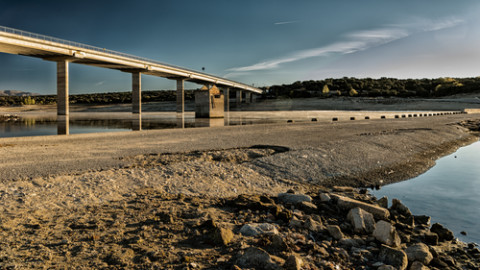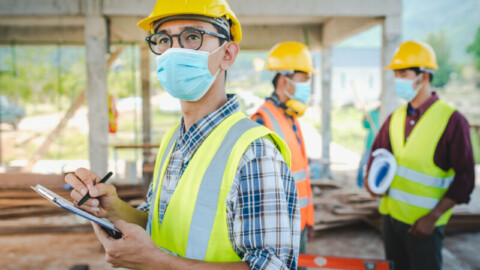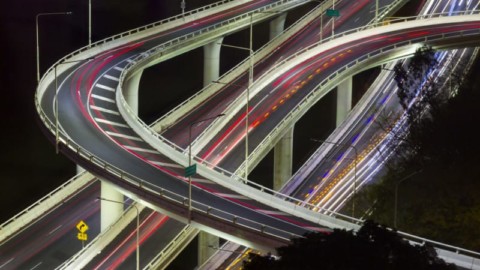Ongoing private investment in supply chain infrastructure is a necessary part of ensuring Australia’s resilience and productivity, says Port of Melbourne Chief Executive, Saul Cannon.
Prior to COVID, supply chain matters rarely made headlines. However, pandemic-related delays in goods ranging from medicine to furniture, electronics and automobiles, alerted many Australians to the fragility of the globalised trade system.
Port of Melbourne Chief Executive, Saul Cannon said recent disruptions and congestion at both the global and local level demonstrate why we need an ongoing focus on building supply chain resilience.
“We must not waste the lessons in resilience we have learned over the last three years,” Mr Cannon said. “Australia is still a relatively small market by international trade and shipping standards, and we need a stronger strategic focus on our global positioning to ensure that Australia is appropriately positioned to respond to growing trade demand and changing market dynamics.”
Port of Melbourne is planning for, and investing in, port projects to maintain efficient operations and respond to capacity needs. Port of Melbourne is investing more than $2 billion in projects over the next decade or so, on top of the approximately $420 million already spent since the State Government privatised the port in 2016.
“It’s about ensuring that we have the right infrastructure in the right place at the right time to deliver for Victoria and beyond,” Mr Cannon said.

The Port Rail Transformation Project – Saul Cannon and Minister Melissa Horne
Port rail transformation project
The Port Rail Transformation Project is well underway, involving the development of a rail terminal adjacent to Patrick’s container terminal at Swanson Dock. This is on track to be complete by mid-2023, and it will support the Victorian Government’s Port Rail Shuttle Network, providing direct rail connections from the port to major freight hubs in Melbourne’s north, west and south-east.
The $125 million project will see more containers moved by rail more efficiently, by-passing roads in inner Melbourne. Mr Cannon said that moving freight by rail can move far more containers in a single trip than trucks can. For example, a 600m long train can carry 84 containers compared with a B-Double truck which has an average capacity of three containers.
“There are significant benefits to moving freight off roads and onto rail. These benefits include lower carbon emissions, improved safety, and decreased air pollution,” Mr Cannon said.
Webb Dock East extension project
The Webb Dock East Extension Project is also underway and will restore Webb Dock East to a two-berth terminal, as it was designed to be. The project involves demolishing a redundant section of concrete and extending the quay line by 71m. This project is also on track to complete around Q3 2023.
Mr Cannon said the project is an important part of a 30-year investment strategy, designed to create a more efficient and productive port that helps to strengthen Victoria’s economy. “We are seeing a rising number of larger vessels calling at the port and our current infrastructure at Webb Dock East at times does not allow for two larger size ships to berth at the same time,” Mr Cannon said.
Swanson Dock West remediation project

The Webb Dock East Extension Project
Planning for the Swanson Dock West Remediation Project is also well underway. “Swanson Dock West wharf structures must be remediated and upgraded to enable us to continue to handle container vessels for the next 50 years,” Mr Cannon said.
A project milestone was reached in January 2023, with the awarding of a contract for Stage 1 of the project to construction giant McConnell Dowell, which includes the remediation and upgrade of the existing wharf structure.
“The existing Swanson Dock West wharf is of varying ages and forms of construction. Sections of the wharf are close to or beyond the typical design life of 30 years and as a result, major remediation is needed,” Mr Cannon said.
Port capacity enhancement program
Finally, Port of Melbourne is in the early stages of its Port Capacity Enhancement Program (PCEP) – a significant infrastructure program aimed at developing a fourth container terminal. Mr Cannon said the port is currently engaging with stakeholders to ensure that our planning takes into account relevant feedback in relation to the development of PCEP.
“Supply chain infrastructure has long lead times, so we need to plan now for the longer-term future. For ports, that means addressing the trend in larger vessels and ensuring we have the capacity to meet trade demand,” Mr Cannon said. “We are committed to meeting our stewardship obligations to manage, operate, maintain and develop the port for the benefit of the economy and the state.”
For more information on Port of Melbourne’s current projects, please visit www.portofmelbourne.com/current-projects.
View its 2050 Port Development Strategy at www.portofmelbourne.com/facilities-development/port-development-strategy/. Or learn more about the Port Rail Transformation Project at www.portofmelbourne.com/facilities-development/port-rail-transformation-project/.















